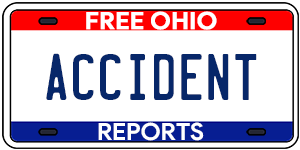What Is In My Ohio Accident Report?
The official Ohio Traffic Accident Report is an extensive document wherein an investigating officer will take down all essential details regarding your crash. You will likely be asked to provide this report when you decide to file a lawsuit or a claim with your insurance company in the days or weeks after your crash.
If you cannot provide a copy of your report, or if an officer is not called to the scene of a crash, you could face significant repercussions throughout the claims process. This is why you should always contact the police and remain at the scene until an officer arrives to take down a report.
Your Ohio Crash Report Explained
Unlike most other states and territories, the Ohio crash report is made up of a single page. Since the officer has to input a significant amount of information into such a small space, numerous codes and abbreviations are used throughout the page.
While a crash report can be easy to understand for an investigator or legal professional, it can present a challenge for the everyday driver. That is why we have broken down each section of the report so you can have a better understanding of this essential legal document.
The first section will include all specific details about the location and time of the crash, including:
● The county where the accident occurred.
● The city, village, or township where the accident occurred.
● The date and time of the crash.
● Latitude and longitude coordinates.
● Reference points, such as a nearby intersection, milepost, or house number.
● The direction of travel.
Here, the investigating officer will list the severity of the crash in terms of any injuries or fatalities. The options listed on the report include:
● Fatal.
● Serious injury suspected.
● Minor injury suspected.
● Injury possible.
● Property damage only.
The third section will include the manner in which the crash occurred, such as:
● Single-vehicle collision.
● Head-on collision.
● Rear-end collision.
● Rear-to-rear collision.
● Sideswipe collision.
If your accident took place in a construction or school zone, the officer would list the specifics of that area in this section. This will detail whether the school zone was active or inactive and include the work zone type, such as:
● Lane closure.
● Lane shift or crossover.
● Shoulder or median work.
● Moving or intermittent work.
In this section, the investigators will list any weather or road conditions that may have played a factor in the collision. They will also take down the type of surface on which the crash occurred, such as blacktop, brick, dirt, etc.
The narrative and diagram are often the most important part of any accident report. This is where the responding officer will take down the circumstances leading up to the crash to the best of their ability. This allows the officer to establish fault and causation, which will be taken into significant consideration throughout the claims process.
The officer will also provide a diagram of the scene, including vehicle direction, nearby road signs, and intersections.
The final portion of the report is where the officer will list all pertinent information regarding their response time and identification, including:
● Date and time the crash was reported
● Date and time the officer was dispatched to the scene.
● Date and time of arrival.
● Date and time the scene was cleared.
● Total road closure time.
● Reporting agency.
● Reporting officer’s name and badge number.
Common Questions About the Ohio Traffic Crash Report
You are able to file your own crash report with the local law enforcement agency where the crash took place. However, it is important to know the insurance company will not consider your opinions regarding fault in causation as much as a report completed by an unbiased law enforcement officer.
Obtaining your crash report through local government or law enforcement agencies costs 5 cents per page. However, this process may take a significant amount of your valuable time and require you to wait in long lines or fill out unnecessary paperwork.
Now, you can recover a completely FREE copy of your report without leaving the comfort of your home. Simply provide a few basic details regarding your crash, and we will do the rest. Click HERE to get started today!
If you decide to file a claim with your insurance company, obtaining a copy of your accident report early on can greatly benefit your claim. The adjuster assigned to your case will use the report to establish fault and causation, as well as the extent of any injuries or damages. Once their investigation is complete, the adjuster will determine the amount you receive in compensation and adjust your rates accordingly.
There is no need to wait in long lines, fill out paperwork, or pay unnecessary fees to get a copy of your report from a government agency. Simply provide us with a few details regarding your accident, and we will send you a certified copy of your Ohio Traffic Accident Report at absolutely zero cost to you.
Don’t wait to obtain legal information that can greatly benefit your claim. Request a completely free copy of your crash report today. Click HERE to find out how!
